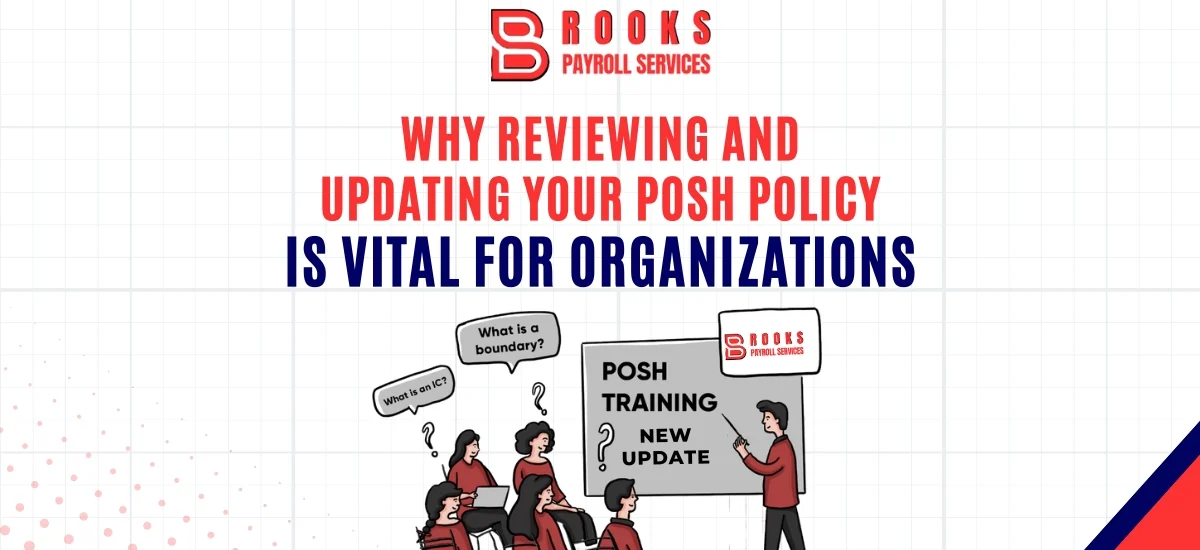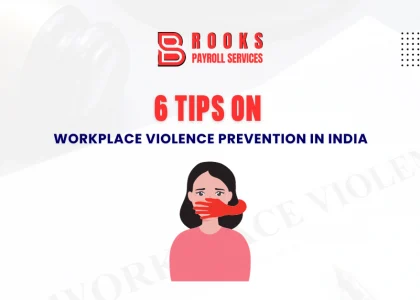In today’s corporate landscape, ensuring a safe and respectful workplace environment is paramount. One essential tool for achieving this goal is a POSH (Prevention of Sexual Harassment) policy. However, simply having a policy in place is not enough. Regular review and updates are crucial to keeping pace with evolving legal standards, societal norms, and organizational changes. Explore why reviewing and updating your POSH policy is essential and explore best practices for doing so effectively.
Understanding the Importance of POSH Policies
Legal Compliance
POSH policies are not just ethical guidelines but legal imperatives. They serve as a shield against legal liabilities, ensuring organizations comply with regulations aimed at preventing sexual harassment in the workplace. By staying abreast of evolving laws and regulations, companies can avoid legal penalties and safeguard their reputation.
Safety and Well-being
A well-crafted POSH policy fosters a workplace culture where employees feel safe, respected, and valued. It goes beyond mere compliance by actively promoting psychological and physical well-being. By addressing harassment promptly and effectively, organizations bolster job satisfaction, productivity, and overall employee morale.
Organizational Reputation
A robust POSH policy is not only about internal compliance but also about safeguarding the organization’s reputation. In today’s interconnected world, news travels fast, and any hint of misconduct can irreparably tarnish a company’s image. Conversely, a proactive stance against harassment signals integrity, fostering trust among employees, clients, and stakeholders.
Challenges in Implementing POSH Policies
Resistance to Change
Resistance to change is a common hurdle in implementing POSH policies. Some employees may view policy revisions as disruptive or unnecessary, highlighting the importance of effective change management strategies.
Lack of Awareness
Ensuring widespread awareness of POSH policies is critical. Merely disseminating the policy isn’t sufficient; comprehensive education on sexual harassment, reporting procedures, and policy nuances is essential to ensure all employees understand their rights and responsibilities.
Ensuring Accessibility
Accessibility is critical to the effectiveness of POSH policies. They should be available to employees in various formats and languages, with straightforward reporting mechanisms guaranteeing confidentiality and impartiality.
Evaluation of Policy Effectiveness
Regularly assessing the efficacy of POSH policies poses a challenge for organizations. Metrics for success must be established, and feedback mechanisms implemented to gauge policy effectiveness and identify areas for improvement.
Best Practices for Reviewing and Renewing POSH Policies
Clear Definitions and Examples
Revise the policy to include clear definitions of harassment accompanied by illustrative examples. This will help eliminate ambiguity and ensure everyone understands what constitutes unacceptable behavior.
Adopt a Trauma-Informed Approach
Train managers and HR staff to handle harassment complaints sensitively, ensuring victims feel supported and empowered.
Regular Review and Update
Review and update POSH policies regularly to reflect changes in laws, societal norms, and organizational dynamics. Aim for annual reviews at minimum to stay current and effective.
Stakeholder Engagement
Engage stakeholders from various levels and departments in the review process to gain diverse perspectives and foster inclusivity.
Customized Training Based on Roles
Tailor training programs to different employee roles, focusing on their responsibilities and rights concerning harassment prevention and reporting.
Feedback Mechanism
Establish a confidential feedback mechanism for employees to share their experiences and suggestions for policy improvement.
Transparency and Communication
Communicate policy changes transparently, providing employees with clear explanations and guidance on how the updates affect them.
Compliance Check
Ensure the revised policy aligns with the latest legal requirements and industry best practices, consulting legal experts if necessary.
Accessibility
Make the updated policy accessible to all employees through various channels, ensuring it’s available in multiple languages for diverse work environments.
In conclusion, reviewing and updating POSH policies isn’t just a regulatory requirement; it’s a strategic imperative for organizations committed to fostering a safe, inclusive, and respectful workplace culture. By staying proactive and responsive to changing needs and expectations, companies can mitigate risks, enhance employee well-being, and safeguard their reputation.
FAQs (Frequently Asked Questions)
- How often should a POSH policy be reviewed?
Regular reviews, at least annually, are recommended to ensure policies remain effective and compliant with current standards.
- Who should be involved in the policy review process?
Stakeholders from various levels and departments, including HR professionals, legal experts, and employee representatives, should participate to ensure diverse perspectives are considered.
- How can organizations encourage employees to report harassment?
Creating a culture of trust, providing precise reporting mechanisms, and ensuring confidentiality are essential for encouraging employees to report harassment without fear of retaliation.
- What are the consequences of non-compliance with POSH policies?
Non-compliance can lead to legal penalties, reputational damage, and loss of employee trust, ultimately affecting the organization’s bottom line.
- Are there specific industries or sectors where POSH policies are critical?
POSH policies are essential across all industries and sectors, as harassment can occur in any workplace. However, industries with high gender imbalances or power differentials may face heightened risks and should prioritize robust prevention measures.









